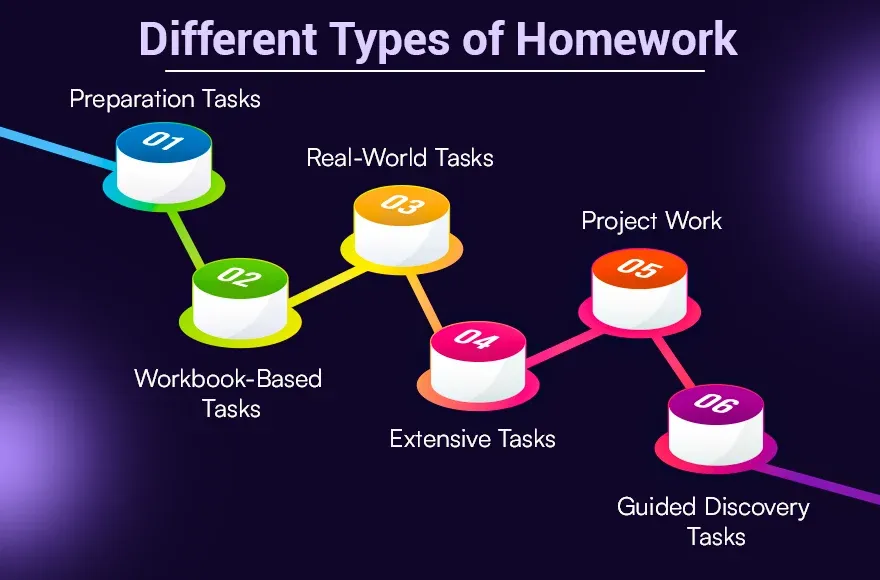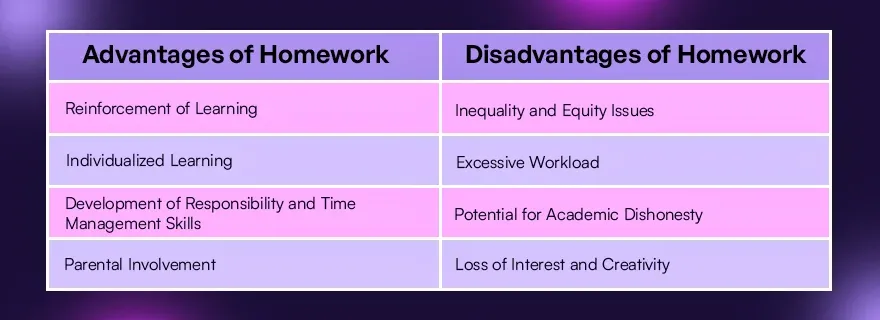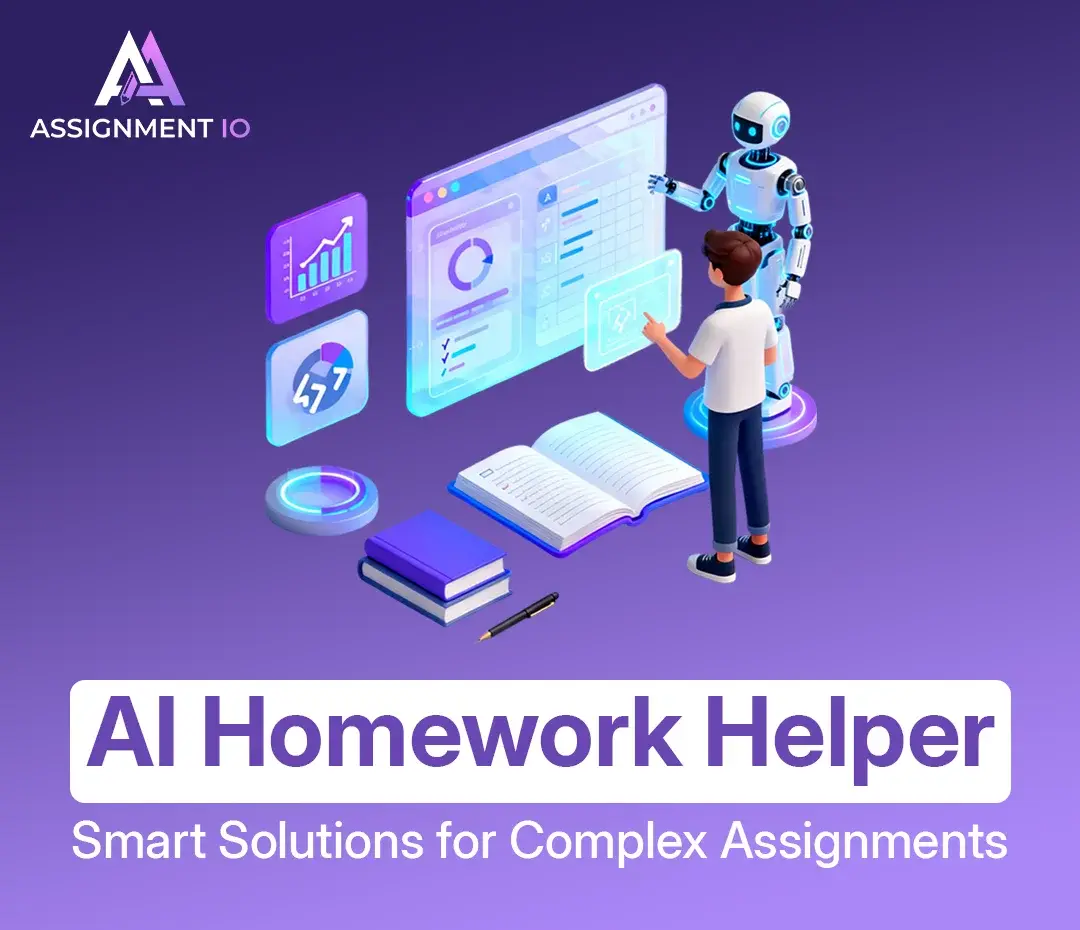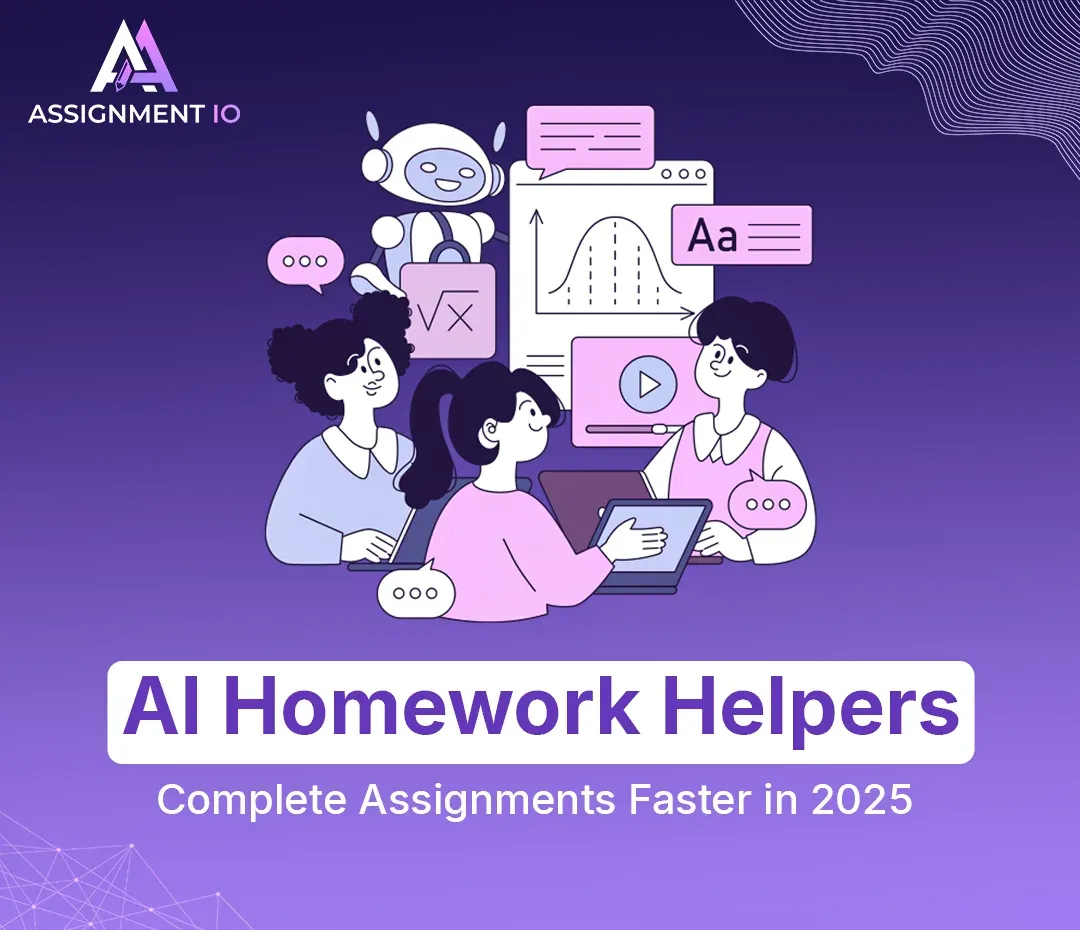Advantages and Disadvantages of Homework

Vikas Kukadiya
Homework has been around for a very long time and has acted as a glue between school and home. It is recommended at different levels for the purpose of consolidation of classroom lessons, independent study, and development of necessary life skills such as discipline and time management. Over time, education has seen a shift in perspective on its relevance and even its effectiveness.
On one hand, there are those who claim homework is necessary to succeed in school; on the other hand, some highlight its negative consequences, such as excessive pressure or inequity. Understanding the pros and cons of homework is vital for students, parents, and teachers to take a pragmatic decision on how homework should be assigned and approached.
Quick Summary
Homework is an extension of classroom learning, generally framed to help learners practice and prepare or explore independently. It benefits the students in several ways-reminders through the reinforcement of knowledge acquired in class, development of skills, and responsibility. But homework may also suffer from disadvantages-stress factor, creating inequalities, and reducing creativity.
Such modern tools as assignment assistance platforms can be of great use to the student who cannot complete his homework efficiently. The use of such tools simplifies tasks and makes learning more effective.
What is Homework?
Homework is a set of academic tasks provided by the teacher to be completed outside regular hours at school. They are intended to improve understanding, reinforce thinking and encourage self-directed learning in students. There is wide variation in the form, scope, and complexity of homework to meet the needs of all kinds of students.
Homework is essentially educational, but it has broad developmental implications that benefit students beyond being responsible, managing time and solving problems.
Different Types of Homework

1. Homework Preparation Assignments
Preparing activities are designed to introduce students to new concepts much earlier than in the classroom. Among pre-requisites, include reading a chapter, watching a relevant video, or conducting research on a topic. Such practices can foster engagement and prepare the student better for upcoming lessons.
2. Workbook exercises
Workbook-based work is often associated with content as, for example, mathematics or grammar, and characterizes the pertinence of practice and application. They contribute toward repetition which helps a student develop certain skills, thus are cornerstone exercises in most curricula.
3. Applied Tasks
Homework with real-life applications relates what one learns in the classroom to actual life. For example, budgeting a weekly allowance or writing a formal letter teaches practical skills while reinforcing what is being studied in class.
4. Long Tasks
Long tasks, like essays or research papers, promote studying on a particular issue. Such assignments upgrade critical and analytical skills since students must compile, synthesize, and present information clearly.
5. Project Work
Projects often promote creativity, teamwork, and problem-solving. Some examples include building a model of the solar system or creating a timeline of historical events. It would require joining all of their skills and areas of knowledge.
6. Guided Discovery Tasks
Conduct self-directed learning in which the learner investigates an assigned topic independently. Examples include scientific phenomenon exploration and an analysis of historical events to provoke learning based on curiosity and innovation.
Also read this article : Best Online Homework Help Websites for Students
Some Key Benefits of Homework

1. Reinforcement of Learning
One important advantage of homework is the "reinforcement of what has been learned in class." Students may reinforce their understanding and memorize the information more easily by applying what they have learned. Homework keeps concepts not fading away, thus minimizing gaps in learning.
2. Personalized Learning
Homework caters to the need of the learner in a class. A teacher could submit more advanced work to advanced learners or foundational concepts to strugglers thus ensuring all learn at their own pace.
3. Responsibility and Time Management Skills Development
Homework builds responsibility within the students. It makes a student behave responsibly by planning his time for homework. Every submission made within time involves development of discipline, priority, and organizational skills, very much needed in professional and academic fields.
4. Parental Involvement
Homework provides insights into the learning of a child for parents. It allows the parent to support their child in education, find problematic areas, and grow close to the child's academic achievements.
5. Preparation for Further Education
In every field of higher education, self-study and independent work have always taken precedence. Homework will be the foundation towards such habits as he builds in his schools.
Some of the Important Disadvantages of Homework
1. Issues of Inequality and Equity
The primary disadvantage of homework is inequality. Not all of the students have the same kind of access to the resources, like internet, quiet spaces for study, or parental support. It may create additional gaps between students from diverse socioeconomic backgrounds.
2. Overburdened Workload
Large amounts of homework can sometimes become unmanageable when teachers give them in bulk. Balancing multiple subjects, extracurricular activities, and personal time leads to stress, burnout, and at worse, health problems like sleep deprivation.
3. Probability of Academic Cheating
Pressure mounted on the need to complete homework often propels students into dishonest activities, such as copying from fellow classmates, copying materials from the internet, or utilizing unauthorized aids. Such incidences lead to shattered learning processes and plenty of long-term consequences.
4. Loss of Interest and Creativity
The repetitive or mundane homework manages to steal the student's interest in learning. With little scope for creative exploration, students may lose their natural curiosity and engagement with subjects.
5. Impact on Family Time
Excessive homework snatches valuable family time. Instead of relaxing, bonding, or indulging in hobbies, students may burden themselves with assignments, which would subsequently affect their emotional well-being and personal development.
Conclusion
Homework is still an essential part of learning that encompasses so many positive aspects and some negative drawbacks. It supports the learning process, improves skills, and provides preparation for future academic demands; however, homework has some negative sides, like creating pressure and exacerbating inequality.
Homework can be more manageable and rewarding for students who cannot complete assignments on time by using modern tools like assignment assistance platforms. The tools help organize tasks, clarify concepts, and ensure timely completion, so homework is accomplished easily.
If students achieve the pros and eliminate the cons of homework, educators, parents, and students are able to create an environment where homework becomes a source of growth rather than stress.
1. What are the advantages and disadvantages of homework?
Homework reinforces classroom learning, encourages skill development, and promotes responsibility. Homework can cause stress, inequality, and de-creativity when assigned without care.
2. How do students benefit from homework?
Students benefit by reinforcing knowledge, developing time management skills, and gaining a deeper understanding of concepts. Homework also sets them up for bigger academic challenges later on.
3. Why is homework sometimes perceived as stressful to some students?
Inadequate homework load or lack of provision of resources coupled with unclear instructions is proven to drive students into stress rather than into learning.
4. How can parents support their kids in doing homework?
Parents can ensure an encouraging study environment, provide appropriate, not dominating management, and encourage a positive attitude towards learning.
5. Are there tools for homework?
Yes, assignment assistance platforms and tools can simplify the process by offering resources, templates, and expert guidance, helping students complete their homework effectively.
Latest Blog's

AI Homework Helpers offer fast solutions, personalized learning, and round-the-clock study support for students in every subject.


Master exams with superior scores and less study time. Step-by-step tips using ChatGPT, Khanmigo, and Quizlet.


AI homework helpers streamline research, writing, and studying so students learn faster and complete assignments with less stress.


Master exams with superior scores and less study time. Step-by-step tips using ChatGPT, Khanmigo, Quizlet.


How deep learning makes AI homework helpers smarter, faster, and more personalized for students.


How AI homework helpers save time, boost learning, and provide personalized study support.

